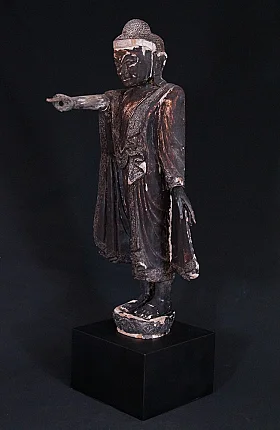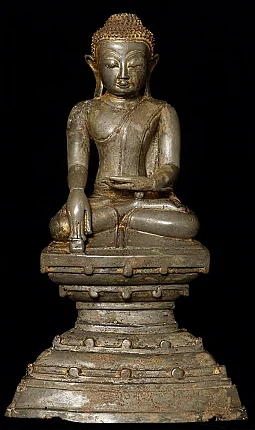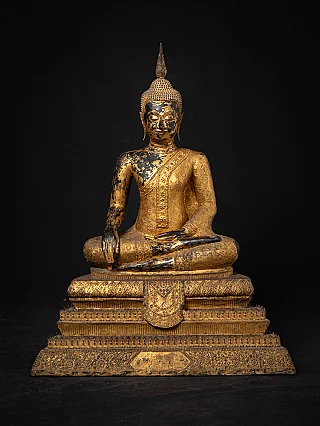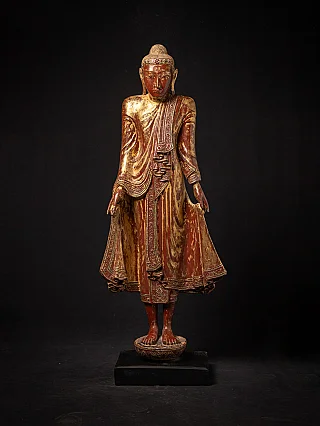The Four Noble Truths
Author : Peter Vredeveld

Buddha statues inshrined in a wall in Ava, Burma
Buddha Spreading the Wisdom
Buddha is the supreme human being honored as a deity by all the people around the globe. Lord Gautama Buddha is regarded as the leader of Buddhism because he had achieved enlightenment through his own personal efforts, dedication, sacrifice, and meditation. After attaining Nirvana, he came to know about the facts of life’s misery, all the pain and sufferings of mankind. Gautama then conveyed his wisdom to others to lighten them up with truths about life. Buddha first expounded his first sermon in 528 B.C. in Deer Park Sarnath near Varanasi and kept alive in the Buddhist world ever since. The Dhammacakkappavattana Sutta, the Buddha’s teachings on The Four Noble Truths, is the main reference which Buddhists have been following for years. In the beginning after his enlightenment, Buddha thought that he had learned the lessons which cannot be explained to general people. "This is such a subtle teaching that he wouldn’t be able to convey lessons precisely in words what he had discovered, so he decided to sat under a tree for a lifetime." Meanwhile, when Buddha was having this tempting thought, suddenly the creator deity of Hinduism, Brahma Sahampati, appeared and convinced Buddha to reach out to people and share his knowledge. Buddha couldn’t deny the request of Brahma, so he started with an aim of clearing a little dust that people had in their eyes. Afterward, he started his journey from Bodhi Gaya to Varanasi, where he meets different ascetic people who were really impressed by his radiant appearance and his principles. Similarly, like Buddha, the Buddhist monks in different countries are teaching disciples the Four Noble Truths. The superlative attainments or the Four Noble Truths are as:
- There is Suffering or Dukkha
- There is the Cause or Origin of Suffering or Dukkha
- There is the End of Suffering or Dukkha
- There is the Path out of Suffering or Dukkha
Each of these truths has three aspects, altogether 12 insights which will replenish The Four Noble Truths in your life. In Buddhism, Arahant is the perfected one who has learned all Four Noble Truths.
Meaning of Four Noble Truths

The basic truths are difficult to understand by the common, where they misinterpret the first truth “There is suffering” into, like "I am suffering, and I want to end it." Ignorant people are found to be practicing meditation in order to retreat from suffering. The actual meaning is "There is Suffering." You cannot run away; it directly inherits after your birth. We should acknowledge that Dukkha exists. We shall take it alike as physical pain or mental anguish in a habitual way rather than seeing it as a Dukkha personal misery. Buddha teaches us to embrace your problems, pains, understand them, and find a reason why there is trouble. Because the second Truth tells us that there is a Cause or Origin of every pain. Everything happens in our life for a reason. The cause of suffering might be due to our expectations, desires, illness, betrayal, or some detachments. It is our responsibility to analyze the reasons for sufferings. The ignorance about the reality of life, attachment to pleasurable experiences, and aversion are the main reasons. We constantly have a fear of getting what we don’t desire or not getting what we desire.
The Third truth states that when we detach ourselves from ignorance and crave, then we can eradicate the sufferings from our life. And the last Fourth Noble Truths says that there are interconnected aspects when developed together will lead us towards the path of ending Dukkha, which is Dhyana. The path term is usually described to take us to the Noble Eightfold Path which includes:
- Right View
- Right Intention
- Right Speech
- Right Action
- Right Livelihood
- Right Effort
- Right Mindfulness
- Right Concentration
Buddha says that when we have learned these Four Noble Truths with an open mind, then we will be able to handle all the suffering with ease. Eventually, it will bring a smile to our face, like that in Laughing Buddha statues.
Share this page














































